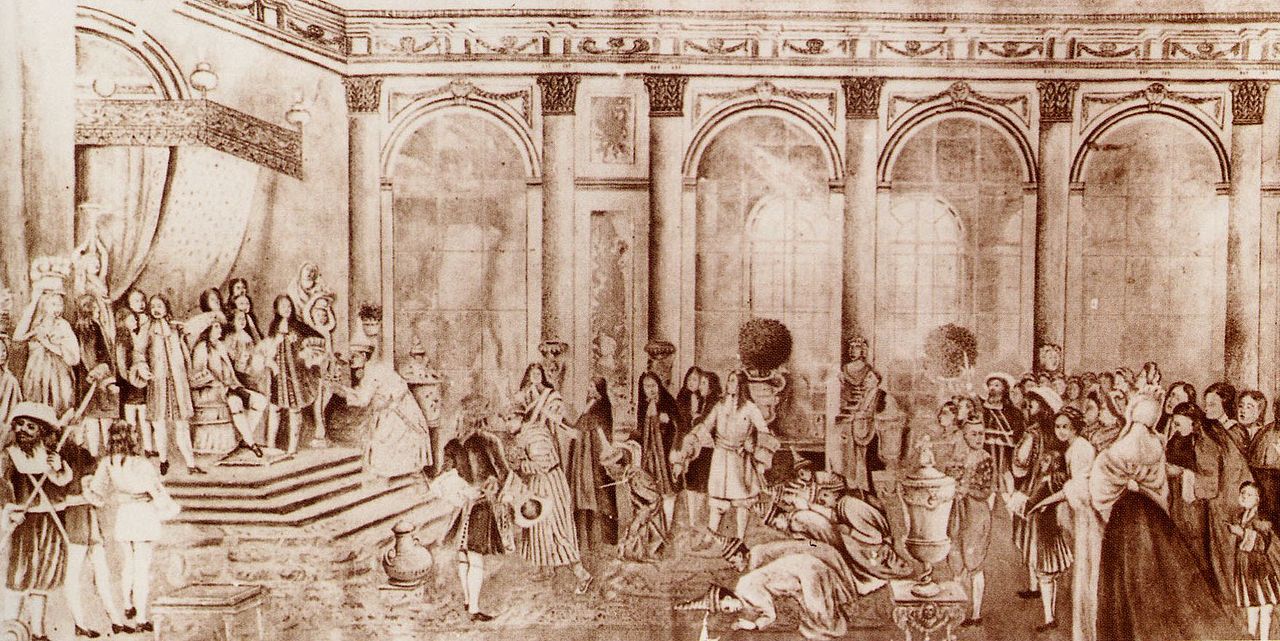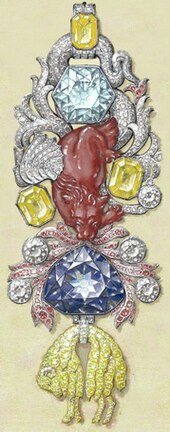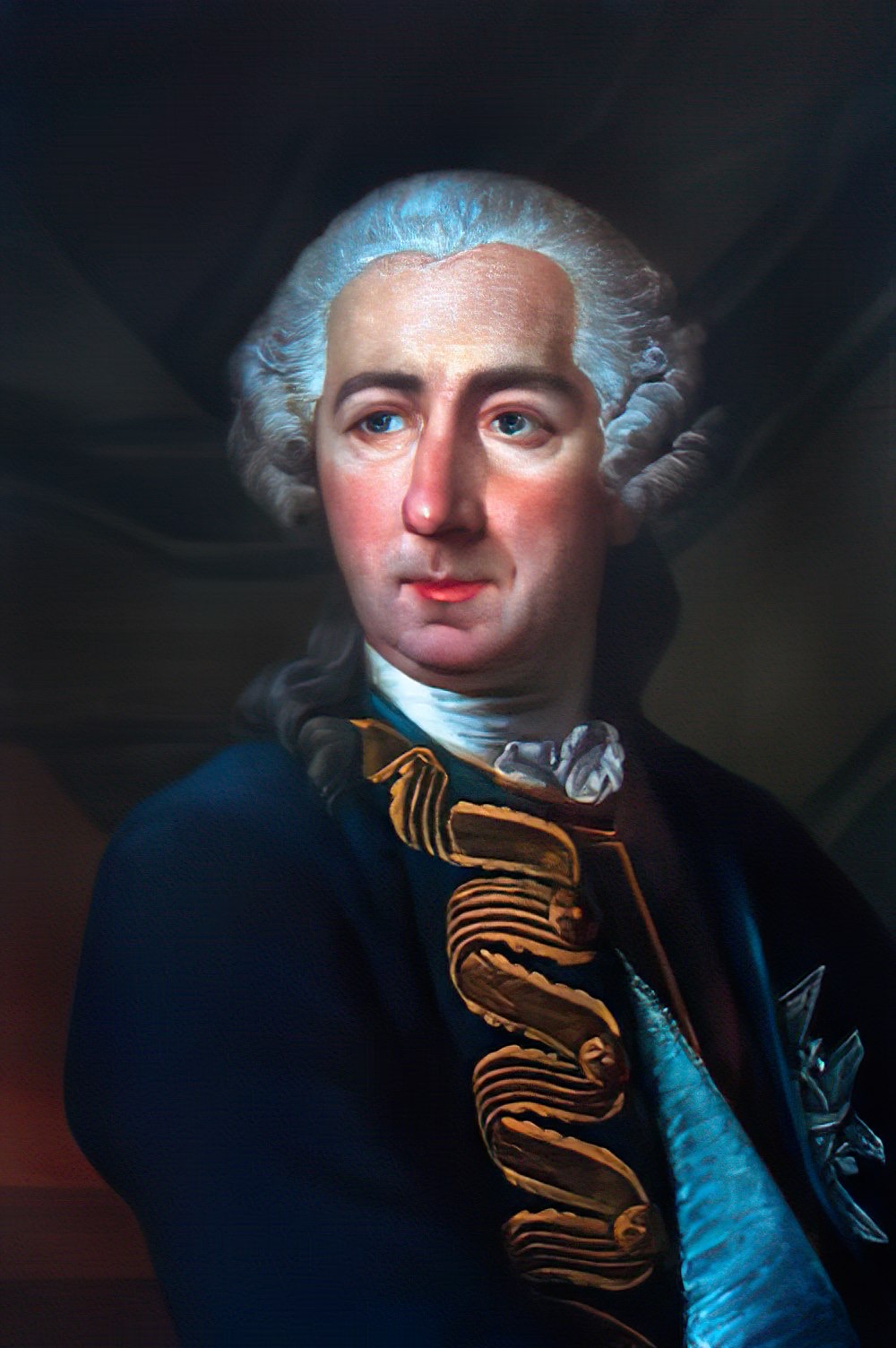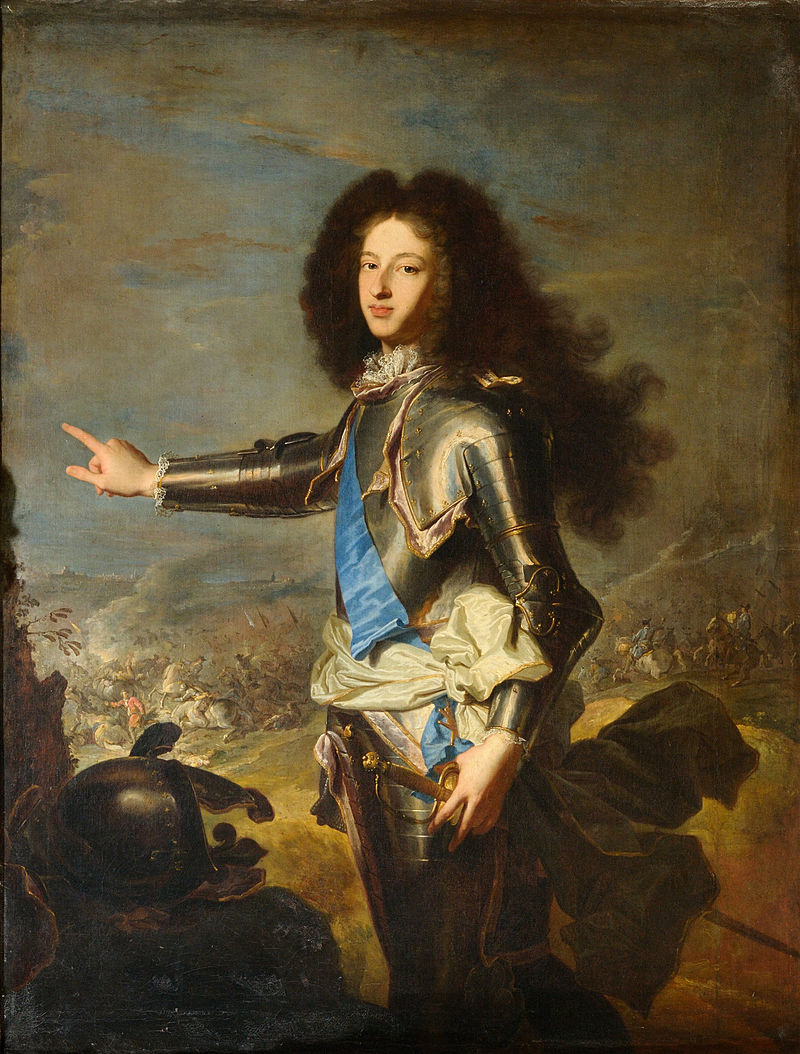Some of these were created before Louis XIV's ascension to the throne while others were created by him or his successors. As a duc you were normally also a peer of France.
Duc d'Aiguillon
Held by the House of Vignerot du Plessis
Duc d'Albret
Held by the House of Bourbon-Condé from 1641-1651
Held by the House of La Tour d'Auvergne from 1651-1771
Duc d'Amboise
Made a duchy in 1787
Held by Louis-Jean-Marie de Bourbon
Duc d'Antin
Made a duchy in 1711
Held by the House of de Pardaillan de Gondrin
Duc d'Arpajon
Made a duchy in 1650
Held by Louis d'Arpajon
Duc d'Aubigny
Made a duchy in 1711
Held by Louise-Renée de Kéroualle from 1684-1734
Held by Charles Lennox de Richmond from 1777-1790
Duc d'Aumale
Made a duchy in 1547
Held by the Houses of Lorraine and Savoy from 1547-1652
Held by the House of Bourbon from 1695-1790
Duc d'Aumont
Made a duchy in 1665
Held by the House of d'Aumont de Rochebaron
Duc de Beaufort
Made a duchy in 1597
Held by the House of Bourbon-Vendôme from 1598-1668
Duc de Biron
Made a duchy in 1598
Held by the House of Gontaut
Duc de Boufflers
Made a duchy in 1708
Held by the House of Boufflers
Duc de Bournonville
Made a duchy in 1652
Held by Ambroise-Francois de Bournonville
Duc de Brissac
Made a duchy in 1611
Held by the House of Cossé
Duc de Brunoy
Made a duchy in 1777
Held by Louis Stanislas Xavier, brother of Louis XVI
Duc de Châteauroux
Made a duchy in 1616
Held by the House of Bourbon-Condé from 1661-1736
Held by Anne-Marie de Mailly from 1743-1744
Held by Charles, brother of Louis XVI, from 1776-1790
Duc de Châteauvillain
Made a duchy in 1703
Held by the House of Bourbon
Duc de Châtillon
Made a duchy in 1736
Held by the House of Châtillon
Duc de Charost
Made a duchy in 1672
Held by the House of Béthune
Duc de Choiseul
Made a duchy in 1665
Held by the House of Choiseul
Duc de Clermont-Tonnerre
Made a duchy in 1571
Held by the House of Clermont-Tonnerre
Duc de Coigny - last peerage made before the revolution
Made a duchy in 1787
Held by Francois-Henri de Franquetot
Duc de Coligny
Made a duchy in 1643
Held by the House of Coligny
Duc de Crèquy
Made a duchy in 1652
Held by Charles de Bonne de Blanchefort
Duc de Damville
Made a duchy in 1610
Held by the House of Lévis from 1648-1661
Held by the House of Bourbon from 1694-1719
Duc de Duras
Made a duchy in 1668
Held by the House of Durfort
Duc d'Elbeuf
Made a duchy in 1581
Held by the House of Lorraine
Duc d'Enghien
Made a duchy in 1566
Held by the House of Bourbon-Condé
Duc d'Épernon
Made a duchy in 1581
Held by the House of Nogaret
Duc d'Éstrées
Made a duchy in 1648
Held by the House of d'Estrées
Duc de Ferté-Senneterre
Made a duchy in 1665
Held by the House of Senneterre
Duc de Fitz-James
Made a duchy in 1710
Held by the House of Fitz-James
Duc de Fleury
Made a duchy in 1736
Held by the House of Rosset
Duc de Fronsac
Made a duchy in 1608
Held by Cradinal de Richelieu from 1634-1642
Held by the House of de Maillé from 1642-1646
Held by Louis II de Bourbon-Condé from 1646-1674
Held by the House of de Vignerot du Plessis from 1674-1790)
Duc de Gesvres
Made a duchy in 1648
Held by the House of Potier
Duc de Gisors
Made a duchy in 1748
Held by Charles-Louis Fouquet de Belle-Isle from 1748-1761
Held by Louis-Jean-Marie de Bourbon from 1776-1790
Duc de Gramont
Made a duchy in 1643
Held by the House of Gramont
Duc de Guise
Made a duchy in 1528
Held by the House of Lorraine from 1528-1675
Held by the House of Bourbon-Condé from 1675-1790
Duc d'Harcourt
Made a duchy in 1709
Held by the House of d'Harcourt
Duc d'Hostun
Made a duchy in 1715
Held by the House of d'Hostun
Duc de Joyeuse
Made a duchy in 1581
Held by the House of Joyeuse from 1581-1608
Held by the House of Lorraine from 1608-1688
Held by Louis II de Melun from 1714-1724
Duc de La Force
Made a duchy in 1637
Held by the House of Caumont
Duc de La Meilleraye
Made a duchy in 1663
Held by the House of de La Porte-Mazarin
Duc de La Valette
Made a duchy in 1622
Held by the House of Nogaret
Duc de La Vallière
Made a duchy in 1667
Held by the House of La Baume de Blanc
Duc de La Vauguyon
Made a duchy in 1758
Held by the House of de Quelen de Stuer de Caussade
Duc de Le Lude
Made a duchy in 1675
Held by Henri de Daillon
Duc de Lavedan
Made a duchy in 1650
Held by the House of Montaut-Navailles
Duc de Lévis
Made a duchy in 1723
Held by Charles-Eugène de Lévis-Charlus
Duc de Lesdiguières
Made a duchy in 1611
Held by the House of dee Bonne de Blanchefort
Duchesse de Louvois
Made a duchy in 1711
Held jointly by Mesdames Sophie and Adélaide, daughters of Louis XV
Duc de Luynes
Made a duchy in 1619
Held by the House of d'Albert
Duc de Mercæur
Made a duchy in 1569
Held by the House of Lorraine from 1569-1649
Held by the House of Bourbon-Vendôme from 1649-1712
Held by the House of Bourbon-Conti from 1723-1770
Held by Charles, brother of Louis XVI
Duc de Montausier
Made a duchy in 1664
Held by Charles de Sainte-Maure
Duc de Montaut
Made a duchy in 1660
Held by Philippe de Montaut-Navailles
Duc de Montbazon
Made a duchy in 1588
Held by the House of Rohan (later combined to Rohan-Guéméné)
Duc de Montmorency
Made a duchy in 1551
Held by the House of Montmorency
Duc de Montpensier
Made a duchy in 1539
Held by the House of Bourbon-Montpensier from 1582-1627
Held by the House of d'Orléans from 1627-1790
Duc de Mortemart
Made a duchy in 1650
Held by the House of Rochechouart
Duc de Noailles
Made a duchy in 1663
Held by the House of Noailles
Duc de Noirmoutier
Made a duchy in 1711
Held by Louis de La Trémoïlle
Duc d'Orval
Made a duchy in 1652
Held by the House of Béthune
Duc de Penthièvre
Made a duchy in 1569
Held by the House of Lorraine from 1575-1608
Held by the House of Bourbon-Vendôme from 1608-1687
Held by the House of Bourbon from 1697-1790
Duc de Piney-Luxembourg
Made a duchy in 1581
Held by the House of d'Albert from 1620-1661
Held by the House of Montmorency from 1661-1790
Duc de Praslin
Made a duchy in 1762
Held by the House of Choiseul-Praslin
Duc de Rambouillet
Made a duchy in 1711
Held by the House of
Duc de Randan
Made a duchy in 1711
Held by the House of Bourbon
Duc de Retz
Made a duchy in 1581
Held by the House of Gondi
Duc de Richelieu
Made a duchy in 1631
Held by the House of Vignerot du Plessis
Duc de Roche-Guyon
Made a duchy in 1621
Held by Roger du Plessis-Liancourt
Duc de Rochefoucauld
Made a duchy in 1622
Held by the House of La Rochefoucauld
Duc de Rohan
Made a duchy in 1603
Held by the House of Rohan-Chabot
Duc de Rohan-Rohan
Made a duchy in 1714
Held by the House of Rohan-Soubise
Duc de Roquelaure
Made a duchy in 1652
Held by Charles de Bonne de Blanchefort
Duc de Rosnay
Made a duchy in 1651
Held by Francois de L'Hospital
Duc de Saint-Aignan
Made a duchy in 1663
Held by the House of de Beauvillier
Duc de Saint-Fargeau
Made a duchy in 1575
Held by the House of d'Orléans
Duc de Saint-Simon
Made a duchy in 1635
Held by the House of Rouroy
Duc de Sully
Made a duchy in 1606
Held by the House of Béthune
Duc de Thouars
Made a duchy in 1595
Held by the House of La Trémoïlle
Duc d'Uzès
Made a duchy in 1572
Held by the House of Crussol
Duc de Valentinois
Made a duchy in 1642
Held by the House of Monaco
Duc de Vendôme
Made a duchy in 1515
Held by the House of Bourbon-Vendôme
Duc de Ventadour
Made a duchy in 1589
Held by the House of Lévis
Duc de Verneuil
Made a duchy in 1652
Held by Henri de Bourbon
Duc de Vieuville
Made a duchy in 1651
Held by the House of La Vieuville
Duc de Villars-Brancas
Made a duchy in 1652
Held by the House of Brancas
Duc de Villeroi
Made a duchy in 1651
Held by the House of Neufville
Duc de Vitry
Made a duchy in 1650
Held by Francois-Marie de L'Hospital
























